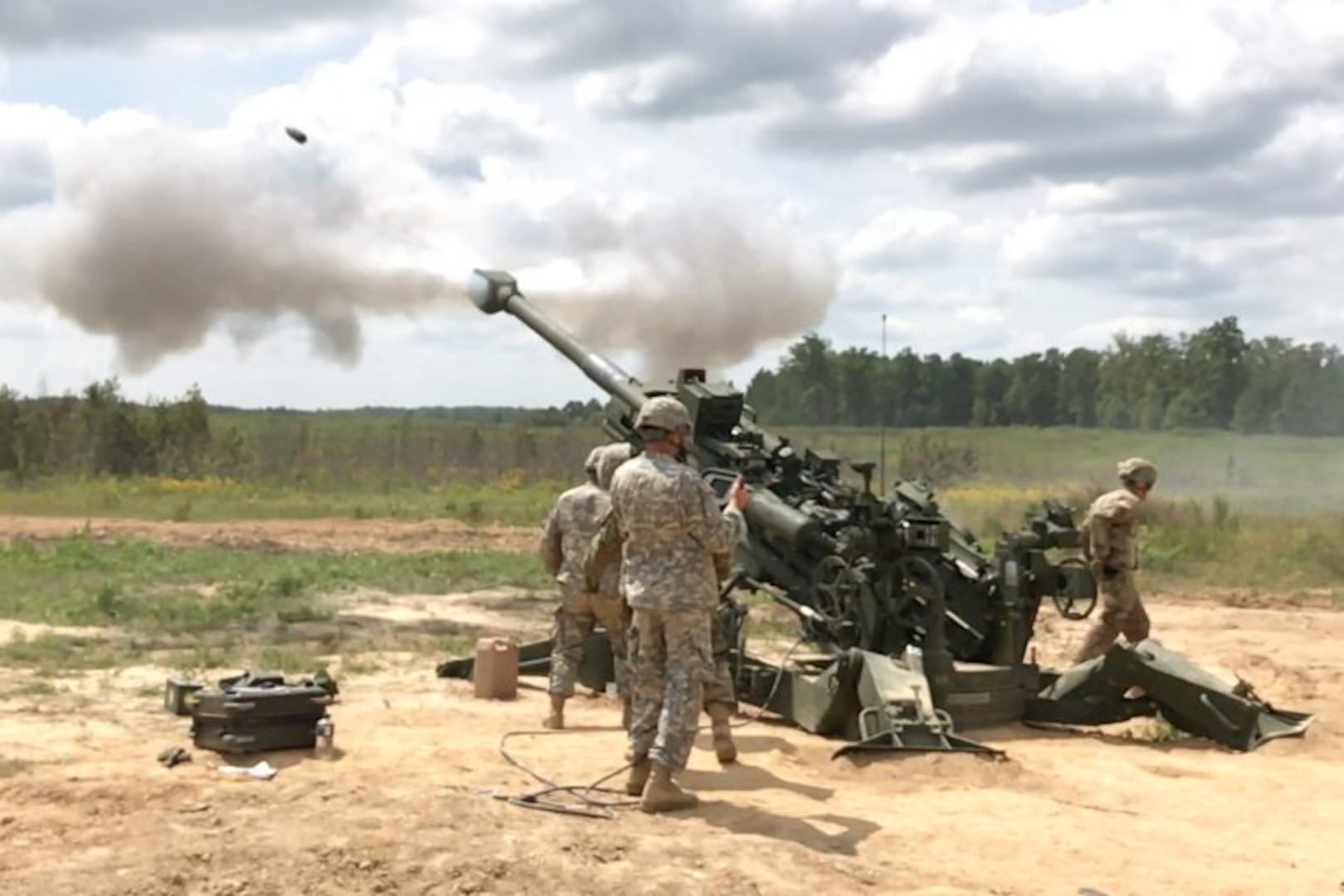
1-111th completes transformation with howitzer live fire

Virginia National Guard Soldiers assigned to the Norfolk-based 1st Battalion, 111th Field Artillery, 116th Infantry Brigade Combat Team live fired new M777A2 howitzers and upgraded M119A3 howitzers during their two weeks of annual training Aug. 17-31, 2017, at Fort Pickett, Virginia, to complete their transformation into a composite field artillery battalion. As part of the battalion’s transformation, two firing batteries upgraded their howitzers to a newer model, and a third firing battery was activated to field a larger caliber howitzer.
The battalion’s Hanover-based Alpha Battery and Norfolk-based Bravo Battery fielded the M119 howitzer upgraded from the A2 to A3 model, and the Hampton-based Charlie Battery received new M777A2 howitzers. Both are towed systems while the caliber for the M119A3 is 105mm and the M777A2 is 155mm.
Near the end of annual training, Lt. Col. Shawn G. Talmadge took command of the battalion from Lt. Col. Jared Lake in a traditional change of command ceremony held Aug. 30. Col. Scott Smith, commander of the 116th IBCT, officiated the event, and presided over the exchange of unit colors between the outgoing and incoming commanders. In addition to the change of command, gun chiefs christened and named each the unit’s newly-fielded M777A2 155mm howitzers.
“Soldiers of the Thunder Battalion performed in an outstanding and professional manner this annual training,” Lake said. “We culminated our yearlong transformation with the fielding of the M119A3 105mm howitzers, the M777A2 155mm howitzers and the Lightweight Counter Mortar Radar systems with the professional expertise from Program Manager Towed Artillery Systems and Program Manager Radar. Alpha Battery, Bravo Battery and newly reformed Charlie Battery went above and beyond the normal fielding event to conduct section certification and qualification, making the battalion ready to support the 116th Brigade Combat Team in any federal warfighting mission.”
Lake explained that the transformation not only gives the battalion more capabilities to bear in a conventional fight, but also gives Virginia more capabilities in domestic response operations, such as hurricane support and snow missions. The new M777 howitzers are towed by medium tactical trucks, and those provide high mobility through heavy snow or high water to be able to transport people and supplies in hazardous weather.
“It was a proud moment and honor to close out my command during this formative fielding event, and I am fully confident that the Thunder Battalion will continue to represent Virginia and the Stonewall Brigade by excelling in any mission assigned.” Lake said.
The new howitzers provide great capabilities for the battalion to provide fire support for the brigade because of the digital fire control systems, Lake said. The new systems improve the accuracy of the howitzer and allow crews to put the guns into action faster. Charlie Battery was activated in January 2017 as part of the battalion’s ongoing transformation.
Soldiers in the battalion were excited about the opportunity to live fire the new howitzers.
“I didn’t know I was an adrenaline junkie until before I was in field artillery,” said Sgt. Joanne Sears, a gunner in Charlie Battery. “You can feel the boom in the ground and in your chest, and nothing beats that feeling. It is amazing. I absolutely love it.”
During the live fire training, Alpha and Bravo Batteries fire 30 missions of 846 105mm rounds and were able to qualify nine sections on Table VI. Charlie Battery fired 20 missions of 206 155mm rounds, but crews were not able to complete the high angle fire for full certification due to FAA restrictions.
The battalion also fielded four Q-50, Lightweight Counter Mortar Radar systems that were used to track live rounds during the unit’s field training.
“This system enhances the capability of our target acquisition platoon in Headquarters Battery,” explained Maj. Donald L. Bailey, II, the battalion executive officer. “The system provides continuous 360-degree detection and location of indirect fire weapons at ranges from 500 meters to 10,000 meters.”